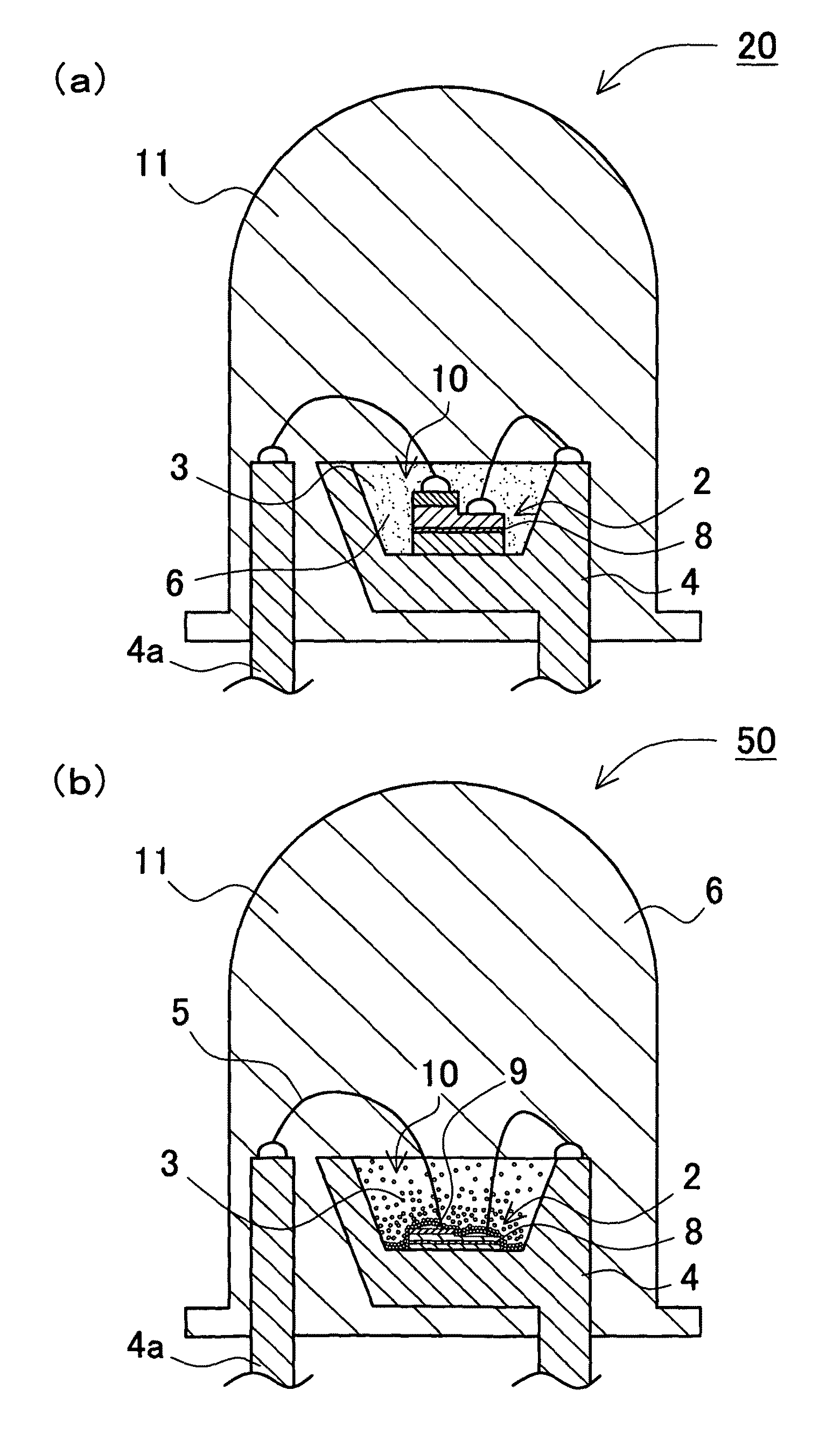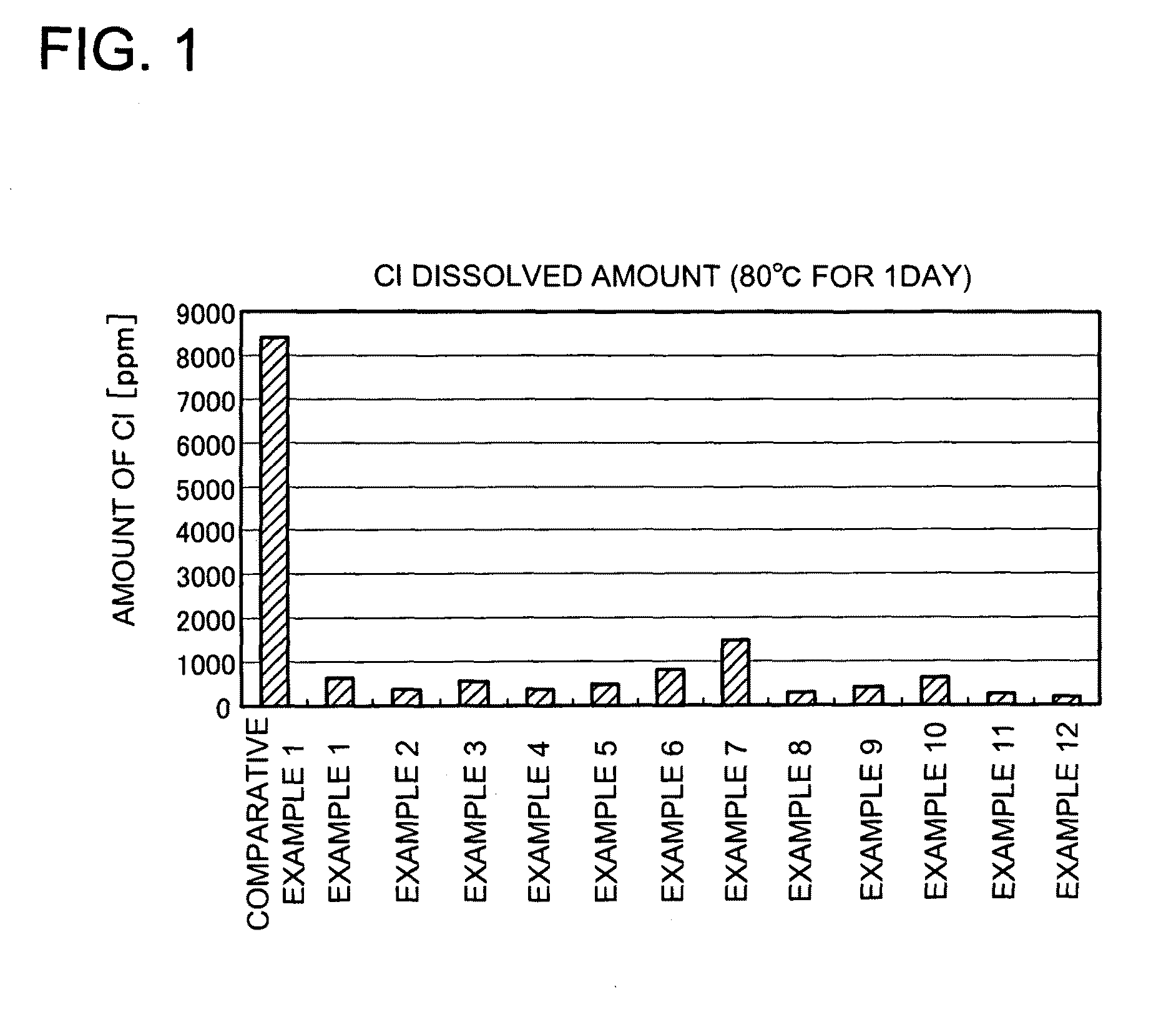Phosphor activated with europium, light emitting device using the same and method of manufacturing the phosphor
a technology of phosphor and europium, which is applied in the direction of solid-state devices, discharge tubes/lamp details, climate sustainability, etc., can solve the problem of relatively low luminous flux, achieve high brightness, reduce the amount of dissolved halogen, and improve the applicability of light-emitting devices
- Summary
- Abstract
- Description
- Claims
- Application Information
AI Technical Summary
Benefits of technology
Problems solved by technology
Method used
Image
Examples
embodiment 1
[0032]The phosphor according to Embodiment 1 is a phosphor containing at least magnesium, silicone, and a halogen, and has europium as its light emission center. In addition, the molar ratio of chlorine element to magnesium element contained in the phosphor is in a range of 1.0≦Cl / Mg≦1.9. This phosphor absorbs near-ultraviolet radiation to blue light and emits green light, specifically, has an emission peak in a range of wavelengths of 495 nm to 548 nm. The peak emission wavelength varies depending on the amounts of the elements contained in the phosphor and the composition of the phosphor. Therefore, the emission peak can be adapted to the purpose by controlling the mass ratio of the composition.
[0033]A phosphor according to Embodiment 1 is represented by the general formula MxEuyMgSizOaXb:Eu2+ (6.5≦x≦8.0; 0.01≦y≦2.0; 3.7≦z≦4.3; a=x+y+1+2z−b / 2; and 1.0≦b≦1.9); MxEuyMgSizAlwOaXb (6.5≦x≦8.0; 0.01≦y≦2.0; 3.7≦z≦4.3; 0xEuyMgSizAlwOaXbNc (6.5≦x≦8.0; 0.01≦y≦2.0; 3.7≦z≦4.3; 0
example 1
[0052]In Example 1, each raw material is weighed to satisfy the charging composition ratio of CaCO3:Eu2O3:MgO:SiO2:CaCl2=6.25:0.25:1:4:1.25 (Ca:Cl:Mg:Si:Eu=7.5:2.5:1:4:0.5).
Specifically, the powers shown below are weighed as the raw materials of the phosphor of Example 1. Herein, the purity of each raw material of the phosphor is assumed as 100%.
calcium carbonate (CaCO3) . . . 110.42 g
europium oxide (Eu2O3) . . . 15.54 g
magnesium oxide (MgO) . . . 7.12 g
silicon oxide (SiO2) . . . 42.40 g
calcium chloride (CaCl2) . . . 24.52 g
[0053]The weighed raw materials are well mixed by dry ball milling, and then placed into a crucible and fired in a reducing atmosphere at 1150° C. for 5 hours. Crushing and wet dispersion were carried out on the fired material to obtain a phosphor powder. The composition ratio in the obtained phosphor was Ca:Cl:Mg:Si:Eu=7.65:1.84:1.00:4.30:0.50, and the content of Cl was 7.5 wt %. An example of reaction formula in generation of the phosphor is shown in the Reacti...
examples 17 to 20
[0074]Further, in Examples 17 to 20, synthesis was carried out in the same manner as the synthesis condition of the phosphor of Example 1, except that the firing temperature was changed to 1170° C. The charged composition ratio of each raw material is as shown in Table 8 below, and the light emitting characteristics of each obtained phosphor is also shown in Table 9. It was confirmed in Examples 17 to 20 that in the emission spectra excited at 460 nm, varying the charging ratio of europium to calcium enables to realize improvement in luminance and shift control to a longer wavelength side.
[0075]
TABLE 8Composition Ratio fromAnalysis ValueExampleCharging Composition Ratio(Mg Standard)NumberCaClMgSiEuCaClMgSiEuExample 177.52.5140.57.441.751.004.060.53Example 187.42.5140.67.071.681.003.970.63Example 197.32.5140.76.971.591.004.050.78Example 207.22.5140.87.001.561.004.261.03
[0076]
TABLE 9460 nm excitationPeakExampleAnalysis value (wt %)ChromaticityChromaticityLuminancewavelengthNumberCaClM...
PUM
| Property | Measurement | Unit |
|---|---|---|
| wavelength- | aaaaa | aaaaa |
| particle size | aaaaa | aaaaa |
| wavelength-range | aaaaa | aaaaa |
Abstract
Description
Claims
Application Information
 Login to View More
Login to View More - R&D
- Intellectual Property
- Life Sciences
- Materials
- Tech Scout
- Unparalleled Data Quality
- Higher Quality Content
- 60% Fewer Hallucinations
Browse by: Latest US Patents, China's latest patents, Technical Efficacy Thesaurus, Application Domain, Technology Topic, Popular Technical Reports.
© 2025 PatSnap. All rights reserved.Legal|Privacy policy|Modern Slavery Act Transparency Statement|Sitemap|About US| Contact US: help@patsnap.com



